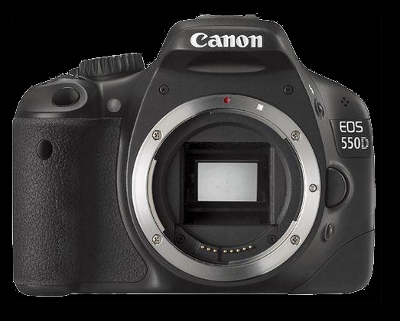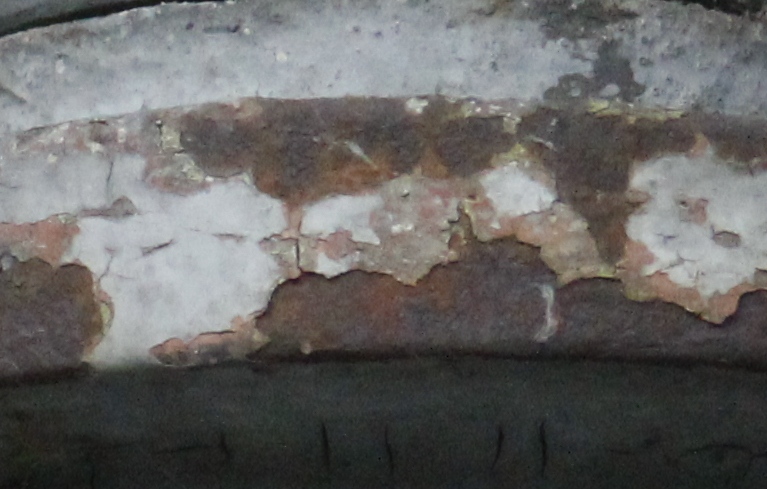Canon 550 D
Canon 550 D


Canon 550 D
[do_widget Text]
Canon 550 D
Introduction Canon 550 d
Why to make a review of a cheap consumer camera ? Because it is a very interesting camera for those who has no budget for a Full Frame or a Prosumer camera like 5d Mk III, 6d, 7d or 60d. This camera was a real successful Milestone in the Canon Dsrl lineup. Still the interest is very high for this camera although the camera is no more in fabrication.
Technical specification:
|
Sensor: 17,9Mpixel CMOS Sensor size: Aps-C Weight: 475 g Focus points/crosstype:9/1 ISO:100-6400, hi 12800 Picture size:5344*3516 pixel Digic 4 software iFCL metering Ext mic socket LCD: 1040 dot Clear view Video: Full HD movies Continuous shooting: 3,7 fps Mount: Canon EF |
[do_widget Text]
Canon 550 D sensor
The sensor in the Canon 550 D is essentially the same as all recent Canons, except Canon 70d which is a little newer and better. The difference is not big.
Weight and size trends:
I like to use long, bright lenses. To carry these lenses with a prosumer camera that is also heavy becomes more and more uncomfortable. I recently checked the Canon 550 d and I was surprised how small and light it is compare to my Canon 30D. The weight of the SRL system caused the start of producing mirrorless or MILC cameras. I would prefer SLR though over the mirrorless cameras. Canon even made a smallest SLR called Canon 100d with it’s 407 gramms, even smaller than the Canon 550 d.
Autofocus system:
The 550d autofocus system is much faster than the 30D, although has the same 9 number of points. The shutter sound is also much more quiet.
LCD:
The new Canon 450d has an excellent 1040k dots LCD, which is much better than the older 230k dots LCD widely used before. Compare to older Canon cameras (up to Canon 40d in semi-pro line and up to 450d in entry level line, 5d in FF) the difference is night and day.
Resolution:
It is the most interesting one for me, as a bird photographer. The Canon 550 d has approximately 18 Mpixel resolution, the 30D has 8 Mpixel.
It means that 550d has more than double resolution than the 30D ? Vow, what a fantastic improvement, I am going to make pretty nice pictures with this camera ! This is not the reality, unfortunately. Some clever guys say: the difference is not double, because the picture covers an area, must calculated that way two direction, means the resolution difference is approximately 50% in one direction. The other sentence can be find very often in blogs that the 18Mpixel sensor has a better cropping potential. Based on laboratory measurements the 550d has approximately 20-23% more resolution than the Canon 30D with canon 200 f2,8L attached, but when I check pictures on the screen the difference is not so obvious at all. If I attach a teleconverter to the lens the difference is even less. So what is the reality? If you have the sharpest prime lenses and perhaps shoot in Raw there is a little gain in resolution, but I wouldn’t name it extra cropping potential. The approximately 20% gain with the sharpest lenses is for the whole 18 Mpix image(5344 pix), meaning if the subject is small the gain is minimal. The little gain can be realized if you make pictures of not very distant objects, like birds from 5-15m, with very high shutter speeds to eliminate blur/protect resolution gain.
Canon 550 d’s high iso performance
What is much more obvious is the 550d high ISO performance . The 550d ISO 3200 setting in daytime perfectly usable if we not see the pictures at 100%. See example below. 30D at ISO 3200 very far from this quality. The Canon 30d makes almost useless ugly banded images at iso 3200.

canon 550d iso 3200

canon 550 100% crop

Canon 550 d at iso 4000 Canon 50/1.4 f2.8
Compare to newer cameras:
Compare to newer Canon the difference in not huge: flip out LCD for most camera models, and dual-pixel video focusing compare to the newest Canon 70d. The Canon 70d sensor is also a little newer.
Bottom line:
Highly recommended the Canon 550d is still an excellent camera. Not up to recent Nikons though.
The Sigma 150mm-600mm
The Tamron 150-600mm Vc USD
Canon 200mm f/2.8 review
Tamron 17-50mm f/2.8 review